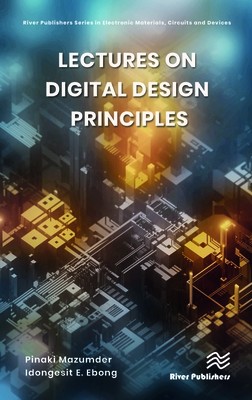
- We will send in 10–14 business days.
- Author: Pinaki Mazumder
- Publisher: River Publishers
- ISBN-10: 8770223610
- ISBN-13: 9788770223614
- Format: 15.6 x 23.4 x 1.8 cm, kieti viršeliai
- Language: English
- SAVE -10% with code: EXTRA
Reviews
Description
Lectures on Digital Design Principles provides students an accessible reference for engaging with the building blocks of digital logic design. The book is an aggregation of lectures for an introductory course and provides a conversational style to better engage with students. Since the text is developed from lectures, important and foundational concepts are highlighted without tedious proofs. With respect to subject matter, students are introduced to different methods of abstracting digital systems, along with the strengths and weaknesses of these different methods. For example, Boolean logic can be represented as algebraic equations, gate level diagrams, switching circuits, truth tables, etc. Strengths and drawbacks to these representations are discussed in the context of Boolean minimization and electronic design automation. The text also delves into dynamic behavior of digital circuits with respect to timing in combinational circuits and state transitions in sequential circuits.
EXTRA 10 % discount with code: EXTRA
The promotion ends in 23d.07:21:17
The discount code is valid when purchasing from 10 €. Discounts do not stack.
- Author: Pinaki Mazumder
- Publisher: River Publishers
- ISBN-10: 8770223610
- ISBN-13: 9788770223614
- Format: 15.6 x 23.4 x 1.8 cm, kieti viršeliai
- Language: English English
Lectures on Digital Design Principles provides students an accessible reference for engaging with the building blocks of digital logic design. The book is an aggregation of lectures for an introductory course and provides a conversational style to better engage with students. Since the text is developed from lectures, important and foundational concepts are highlighted without tedious proofs. With respect to subject matter, students are introduced to different methods of abstracting digital systems, along with the strengths and weaknesses of these different methods. For example, Boolean logic can be represented as algebraic equations, gate level diagrams, switching circuits, truth tables, etc. Strengths and drawbacks to these representations are discussed in the context of Boolean minimization and electronic design automation. The text also delves into dynamic behavior of digital circuits with respect to timing in combinational circuits and state transitions in sequential circuits.


Reviews